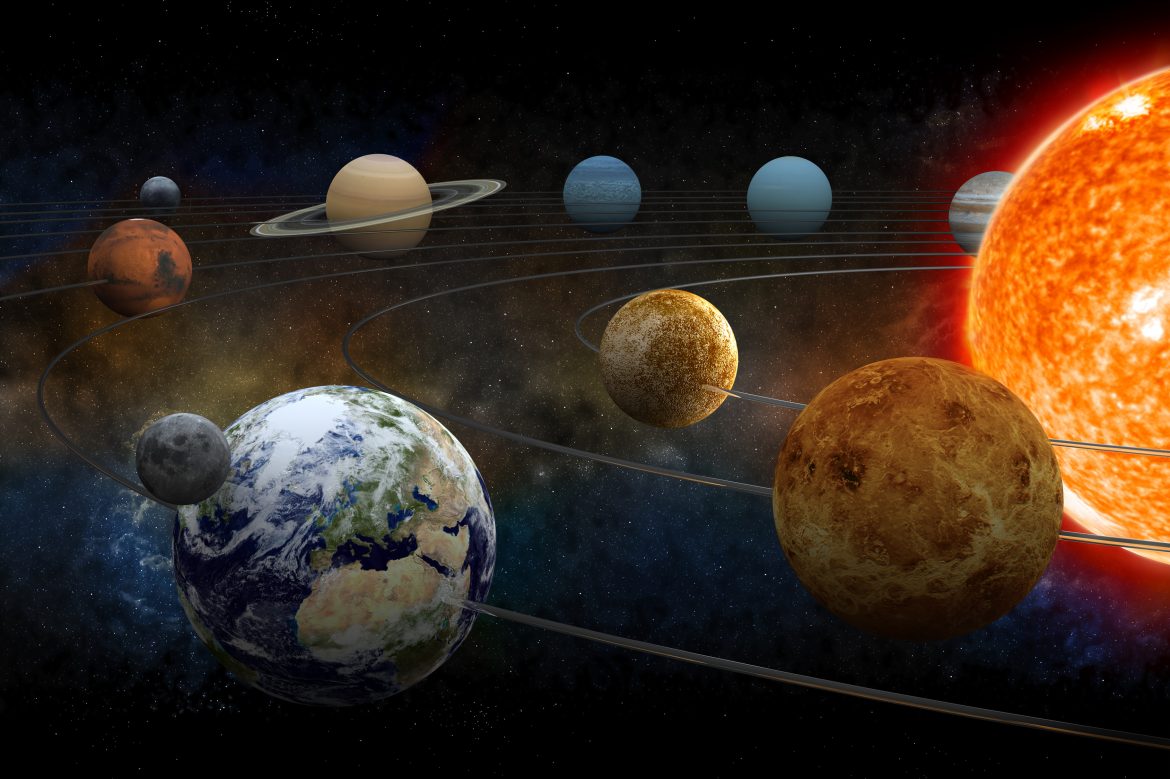
The Solar System is Different than We Know!
While you read these lines, approximately 30 spacecraft are strolling around our Solar System, gathering information. If you would like to know what recently surprised us or what we learned latest, here is a summary of what Monte L. Richard’s compilation.
Jupiter and Saturn Toss Comets at Us
Jupiter was thought to attract comets and asteroids with its massive gravity field, protecting Earth from the majority of these threats. As it turns out, the situation is quite the opposite. Simulations carried out in NASA’s laboratories in Pasadena showed that Jupiter and Saturn were more likely to toss space debris towards the inner parts of the Solar system, into orbits that would carry these to us. The other side of the medallion: Comets hitting early Earth may be responsible for delivering the volatile materials necessary for life to form.
Pluto has Liquid Water
The latest news revealed about our beloved dwarf planet Pluto, is that it has an ocean. Research on its large crater Sputnik Planum showed that Pluto has a liquid ocean with a salinity of around 30 percent, which is 100 kilometres thick. The ocean is beneath an icy shell that is 300 kilometres thick. The fact that Pluto seems to be expanding shows this ocean is not in the process of freezing, which would otherwise shrink the planet.
Cores of Neptune and Uranus are covered in Plastic
Thanks to mathematics, researchers were able to take a hypothetical look at the very inside of distant gas giants Neptune and Uranus. The results Show their rocky inner cores are wrapped up in exotic polymers, organic plastics, crystallized carbonic acid, and orthocarbonic acid.
Mercury Has a Huge Canyon
The little planet apparently finished its volcanic action 3-4 million years ago, cooled, started to shrink and eventually buckled, forming a mega grand canyon which provides spectacular scenery. Scientists state the canyon is about 400 kilometres wide and 965 kilometres long, with steep sides that dip as much as 3 kilometres.
Venus was Once Habitable
The only planet spinning backwards, Venus is able to melt lead with its surface temperatures that can go up to 460°C. It also has clouds of sulfuric acid. Yet, it once had a life-friendly structure and an ocean. Of course, about 4 billion years ago. In fact, the extremely dry planet is believed to have had water for over two billion years.
The Moon “Charges” the Earth
Until recently, scientists weren’t sure why giant ball of molten iron at the centre of the Earth kept spinning. In the past 3.4 billion years, it should have cooled off more than just 300°C and slowed down considerably. Scientists now believe that the spinning core of our planet is powered by the Moon’s orbit.
Saturn’s Rings Are New
Recent studies showed that the “Lord of the Rings” of our Solar System did not have its famous rings when it first formed 4 billion years ago. Instead, Saturn’s major moons appear to have formed during the Cretaceous Period, when the dinosaurs were roaming the Earth.
There are 15,000 Huge Asteroids Close by
In 2005, NASA was tasked with finding 90 percent of the big near-Earth objects (NEOs) by 2020. In 2016, they raised the number of their NEO findings to 15,000. Of course, they are investigating the ones carrying the highest possibility of crashing into us.
Mysteries of the Sun Exposed
The Sun’s magnetic poles swaps around every 11 years, coinciding with a period of increased sunspots and solar activity. Venus, Earth, and Jupiter align at the same time and scientists think the Sun may be affected by this alignment, when their combined gravity causes a tidal-like effect on the Sun’s plasma and disrupts the Sun’s magnetic field.
REFERENCES
- 1. http://listverse.com/2016/12/18/10-amazing-things-weve-learned-about-the-solar-system-in-2016/
- 2. http://news.nationalgeographic.com/news/2013/11/131106-russian-meteor-chelyabinsk-airburst-500-kilotons/
- 3. http://www.nature.com/nature/journal/v503/n7475/full/nature12741.html
